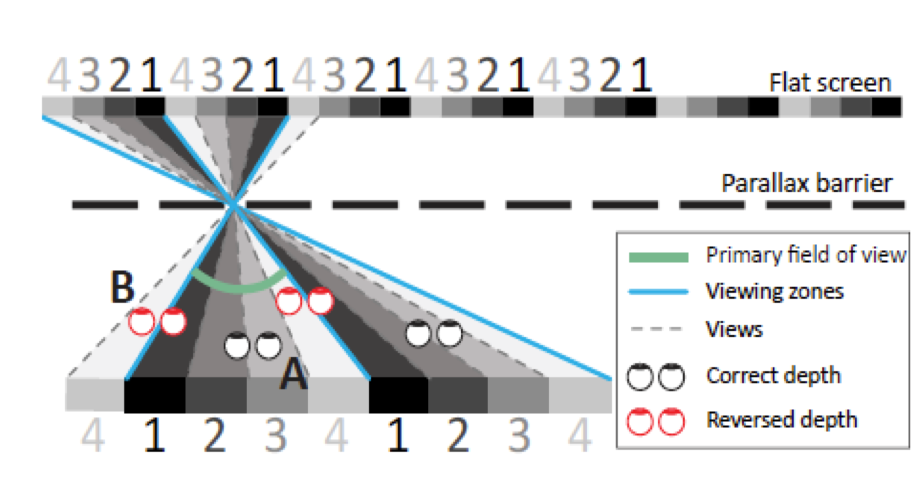Improving Visual Quality of View Transitions in Automultiscopic Displays
Publication
ACM Transactions on Graphics, Vol.33 Issue 6
Authors
Song-Pei Du, Piotr Didyk, Frédo Durand, Shi-Min Hu, Wojciech Matusik

Abstract
Automultiscopic screens present different images depending on the viewing direction. This enables glasses-free 3D and provides motion parallax effect. However, due to the limited angular resolution of such displays, they suffer from hot-spotting, i. e., image quality is highly affected by the viewing position. In this paper, we analyze light fields produced by lenticular and parallax-barrier displays, and show that, unlike in real world, the light fields produced by such screens have a repetitive structure. This induces visual artifacts in the form of view discontinuities, depth reversals, and excessive disparities when viewing position is not optimal. Although the problem has been always considered as inherent to the technology, we demonstrate that light fields reproduced on automultiscopic displays have enough degrees of freedom to improve the visual quality. We propose a new technique that modifies light fields using global and local shears followed by stitching to improve their continuity when displayed on a screen. We show that this enhances visual quality significantly, which is demonstrated in a series of user experiments with an automultiscopic display as well as lenticular prints.
Paper
improving-visual-quality-of-view-transitions-in-automultiscopic-displays.pdf